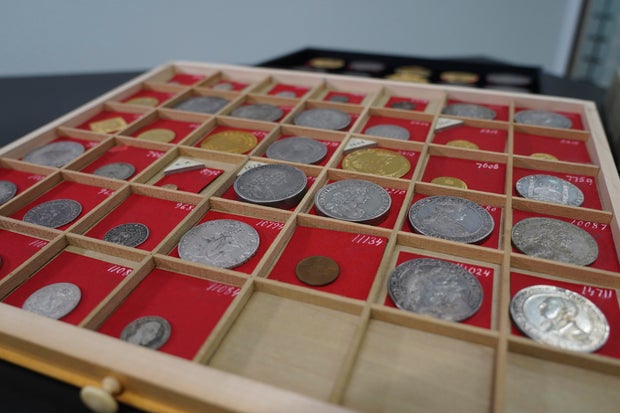Copenhagen, Denmark — A Danish butter magnate’s vast coin collection is finally set to go on sale a century after his death and could fetch up to $72 million, his auction house says.
Lars Emil Bruun, also known as LE Bruun, stipulated in his will that his collection of 20,000 pieces be safeguarded for 100 years before being sold. Deeply moved by the devastation of the First World War, he wanted the collection to be a reserve for Denmark, fearing another war.
Now, more than a century since Bruun’s death at age 71 in 1923, New York-based Stack’s Bowers, a rare coin auction house, will start auctioning the collection this fallwith several sales planned for the coming years.
About your site, the auction house calls it “the most valuable collection of world coins to ever come to market.” The existence of the collection is known in Denmark, but not widely, and it has never been seen by the public.
“The collection…has remained essentially intact, unlike the collections of its contemporaries, which have long been dispersed,” the website says. “…Since 2011, nearly 20,000 meticulously organized items, housed in four large custom-made cabinets (as they were at Mr. Bruun’s death in 1923), have remained safely stored in a secret location, insured for 500 million Danish kroner (approximately US$72,550,000).”
“When I first heard about the collection, I couldn’t believe it,” said Vicken Yegparian, vice president of numismatics at Stack’s Bowers Galleries.
“We have collections that have been off the market for over 100 years,” he said. “But they are extremely well-known internationally. This was the best open secret ever.”
James Brooks-AP
How the collection was accumulated
Born in 1852, Bruun began collecting coins as a boy in the 1850s and 1860s, years before he began accumulating vast riches in packing and wholesaling butter.
His wealth allowed him to pursue his hobby, participating in auctions and building a large collection that included 20,000 coins, medals, tokens and banknotes from Denmark, Norway and Sweden.
After the devastation of the First World War and fearing another war, Bruun left strict instructions in his will for collection.
“For a period of 100 years after my death, the collection will serve as a reserve for the Royal Collection of Coins and Medals”, he stipulated.
James Brooks-AP
“However, if the next century passes with the national collection intact, it will be sold at public auction and the profits will go to the people who are my direct descendants.”
This stipulation did not stop some descendants from trying to break the will and profit, but they were unsuccessful. “I think the will and testament were quite strict. There was no breach,” Yegparian said.
Yegparian estimates that some pieces can sell for as little as $50, but others can cost more than $1 million. He said potential buyers were already requesting a catalog before the auction was announced.
The collection’s century-old path to auction
The collection first found refuge in the former Danish royal residence, Frederiksborg Castle, and later went to the National Bank of Denmark.
The National Museum of Denmark had the right of first refusal on part of the collection and purchased seven rare coins from Bruun’s vast hoard before they were auctioned.
James Brooks-AP
The seven coins – six gold and one silver – were all minted between the 15th and 17th centuries by Danish or Norwegian monarchs. The cost of more than US$1.1 million was covered by a support association.
“We chose coins that were unique. They are described in the literature as the only existing example of this type,” said senior researcher Helle Horsnaes, a coin expert at the national museum.
“The mere fact that this collection has been closed for a hundred years makes it a legend,” said Horsnaes. “It is like a fairy tale.”


























